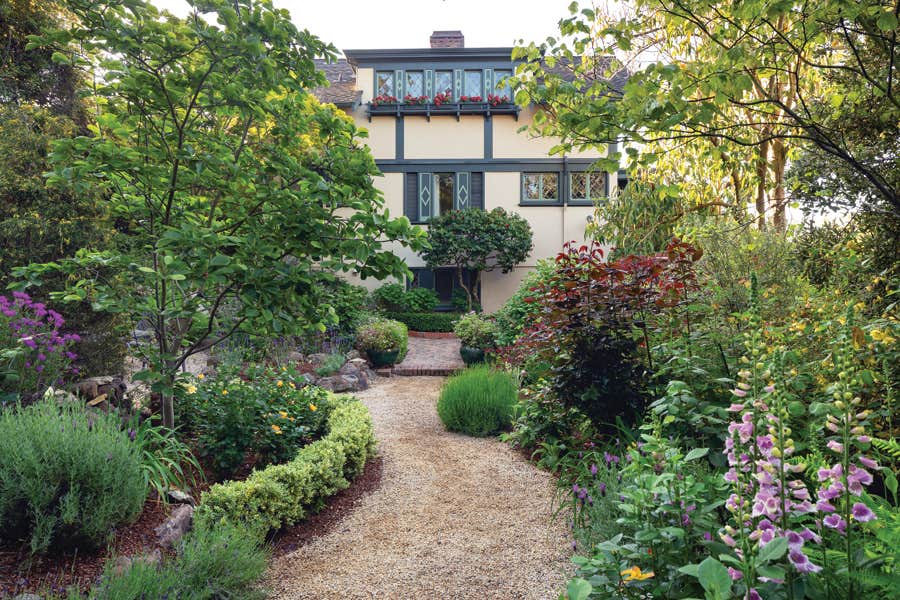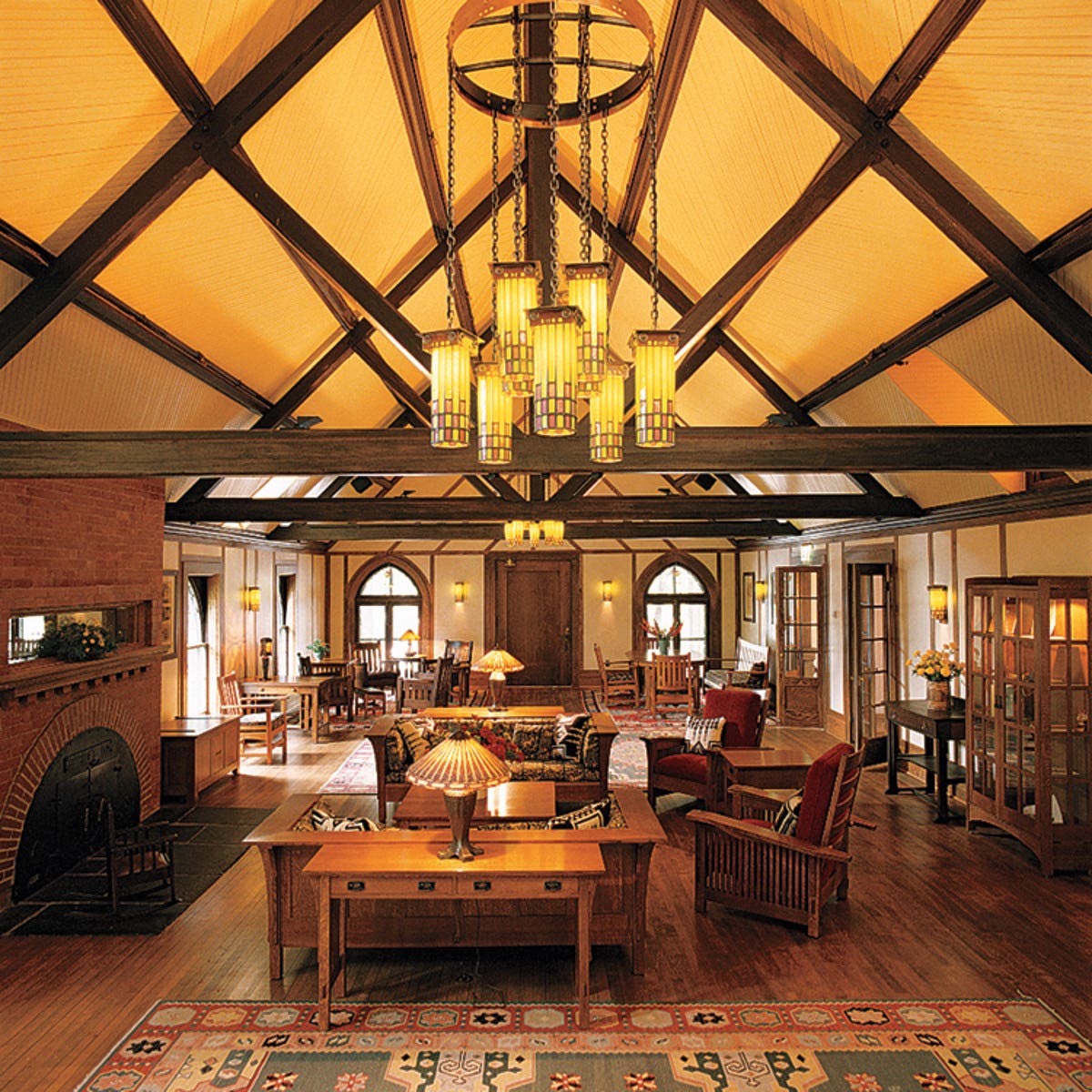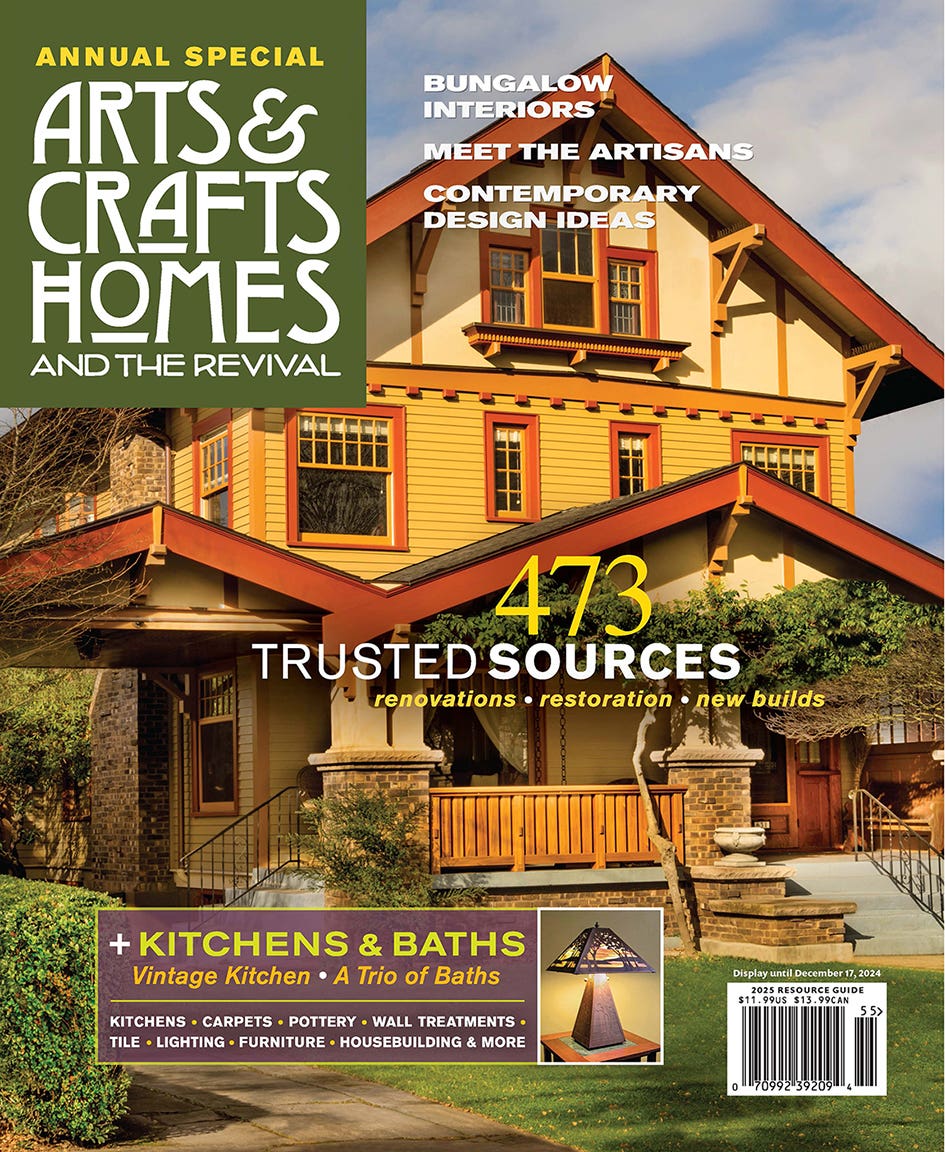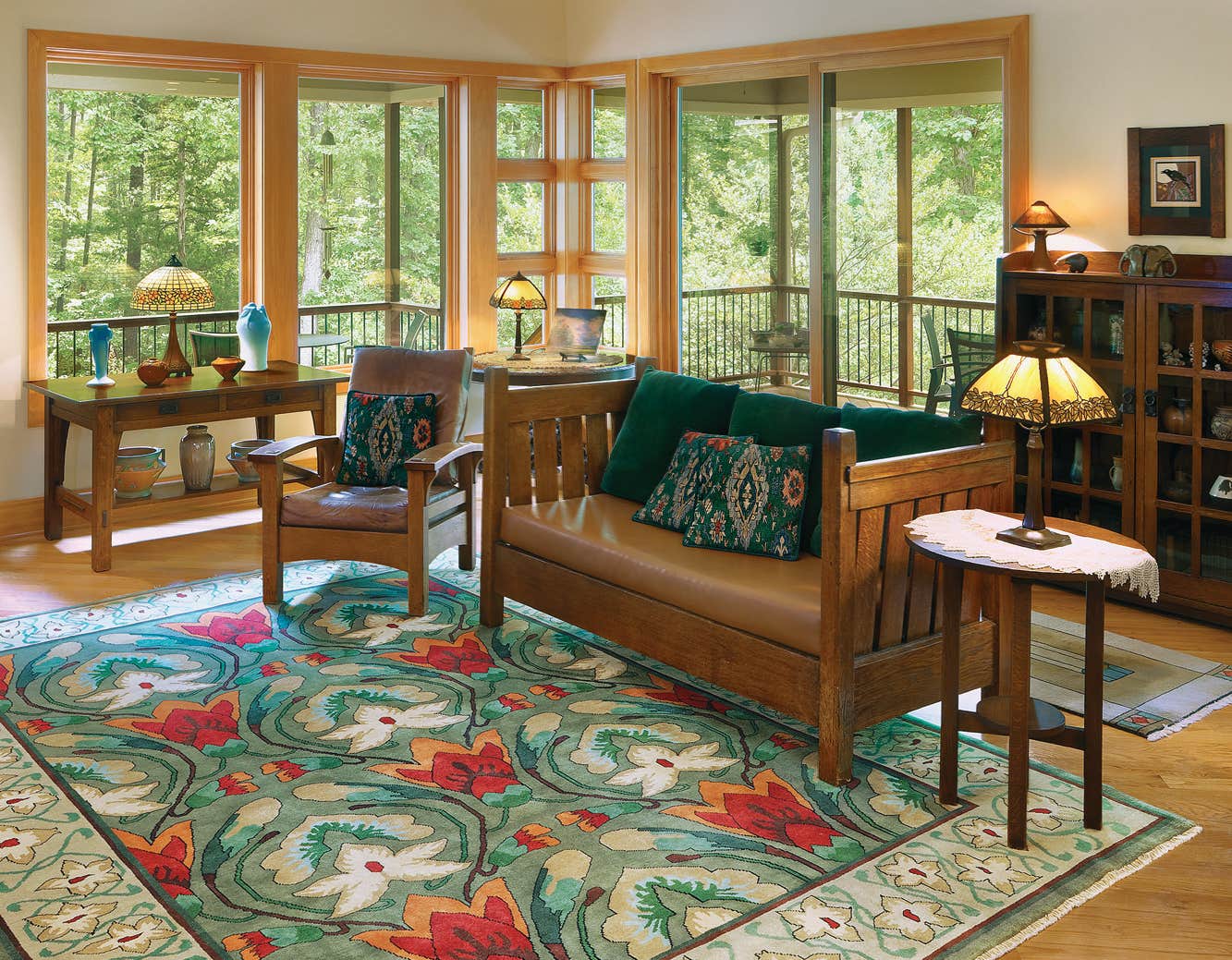Bainbridge Bungalow
Amidst newly planted gardens that offer views of the bay and mountains, a charming 1915 bungalow of seven gables is restored with regard for history.
Bainbridge Island is heavily forested, a 65-square mile island in Puget Sound in the state of Washington. When Jill and Dean Sterrett went shopping for a new home near Seattle, they chose Bainbridge with its bluffs and bays, inlets and streams.
The 35-minute ferry ride from downtown, they thought, would be more enjoyable than a traffic-clogged commute. The rural atmosphere appealed to them, more so than shopping centers and suburban sprawl. The two were thrilled when they saw the modest bungalow set high above the water. Dean and Jill had restored a small Craftsman house in California and they liked the straightforward styles of that time.
The setting was magical; hidden in a clearing deep in the woods, amongst ferns and moss-covered trees, the house overlooked a bay and the Olympic Mountains beyond. The bungalow had an honest charm, having not been altered in any substantial way since it was built in 1915. A wide porch wrapped around the front, facing sunsets. Inside, a river-rock fireplace anchored the living room, which retained aged fir mouldings and trim.
Apparently, though, it wasn’t love at first sight. The house had been a rental and poorly maintained. Many period details had been removed: all of the original lighting, a wood colonnade separating the living and dining rooms, original fittings and tile in the baths. The kitchen had been “modernized” with cheap box-store replacements for cabinets and fixtures. The upstairs hallway had a worrisome slope; at the top of the stairs, the hall was interrupted by a brick chimney stack serving an ancient oil furnace that would need replacement. A lean-to carport was, indeed, leaning precariously; a laundry room added to the north side of the house blocked the best views of the bay. Exposed rafter tails were rotten, the house needed a new roof, and all systems would require updating.
Jill and Dean bought the house but lived here for a year before beginning renovations. This helped them get to know the house and set their priorities. They noted how the light changed during the day. They read about and researched the Arts & Crafts movement, acquiring a sizeable library of books. Then they began to buy antiques.
Jill Sterrett, an urban planner, engaged her architect friends to help. The plan was to do a modest remodeling, staying in scale with the original house and the period’s architecture. They chose as their contractor a design/build firm led by architect Tom Spivey. Knob-and-tube wiring was replaced, as was cast iron plumbing; the roof got new cedar shingles. Arts & Crafts-style light fixtures from Old California Lighting and Restoration Hardware replaced missing originals.
Cased openings were added between the kitchen and adjoining rooms, and new woodwork matched and stained to the original fir trim. An expanded pass-through between the dining room and kitchen was added over the built-in buffet, incorporating salvaged stained glass panels. A master bath was installed upstairs, with an antique washstand converted to a vanity.
Dean, the family cook, wanted a state-of-the-art kitchen. Sensitively designed for the house, it includes a six burner Garland, a Sub-Zero refrigerator, and Marmoleum flooring. The kitchen occupies space that once was a laundry room and the carport addition.
Custom Arts & Crafts-compatible cabinets—modeled after an old kitchen cabinet in the breakfast room—are joined by a vintage science table, used as the center island and lit by an antique billiards light fixture overhead.
Sustainable-energy upgrades were made. Next, the couple turned to exterior restoration. Old lead paint was removed according to abatement protocol, and the house was painted in earthy, custom-mix Benjamin Moore colors. The new Euroshake roofing is a sustainable and fire retardant material based on recycled rubber tires.
Brian D. Coleman, M.D., is the West Coast editor for Arts & Crafts Homes and Old House Journal magazines, our foremost scout and stylist, and has authored over 20 books on home design.








